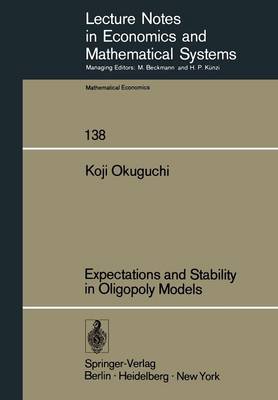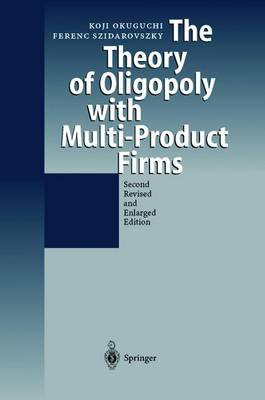Lecture Notes in Economics and Mathematical Systems
1 primary work • 2 total works
Book 138
Ever since A.C.Cournot(1838), economists have been increasingly interested in oligopoly, a state of industry where firms producing homogeneous goods or close substitutes are limited in number. The fewness of firms in oligopoly gives rise to interdependence which they have to take into account in choosing their optimal output or pricing policies in each production period. Since each firm's profit is a function of all firms' outputs in an oligopoly without product differ entiation, each firm in choosing its optimal output in any period has to know beforehand all other rival firms' outputs in the same period. As this is in general impossible, it has to form some kind of expecta tion on other firms' most likely outputs. Cournot thought that in each period each firm assumed that all its rivals' outputs would remain at the same level as in the preceding period. Needless to say, the Cournot assumption is too naive to be realistically supported. However, the Cournot profit maximizing oligopoly model characterized by this assumption has many important and attractive properties from the view point of economic theory and provides a frame of reference for more realistic theories of oligopoly. In Chapters 1-3, we shall be engaged in analyzing the Cournot oligopoly model in greater detail from the viewpoints of existence, stability, uniqueness and quasi-competitive ness of the equilibrium.
Vol 342
The Theory of Oligopoly with Multi-Product Firms
by Koji Okuguchi and Ferenc Szidarovszky
Published June 1990
In the mid 1960's both authors undertook independent works in oligopoly.and game theory. However, it was not until 1983 that they formally met. Since then, they have continued meeting either in Budapest or Tokyo. Their collaboration has resulted in numerous publications as well as in this work. Essentially, this book has two origins. First, it originated in previous results, either published or circulated in mimeograph form. Finely sifting their results, the authors constructed a concise reinterpretation of their achievement to date. However, this unifying process led to the second origin. Reconsideration, particularly in this comprehensive approach, generated new results. This was especially true in the analysis of the existence, uniqueness and global stability of the Cournot-Nash equilibrium for oligopoly with multi-product flrms, and for several modilled Cournot and related models. This book should be ideal for graduate students in economics or mathematics. However, as the authors have firmly grounded their ideas in the formal language of mathematics, the student should possess some background in calculus, linear algebra, and ordinary differential and difference equations. Additionally, the book should be useful to researchers in oligopoly and game theory as well as to mathematically oriented economists. The methodology developed for analyzing the existence and stability of oligopoly equilibrium should prove useful also in theoretical analysis of other economic models. Weare both very grateful to Professor Wilhelm Krelle for his careful review and helpful suggestions. In addition, Koji Okuguchi wishes to thank Professors W.

